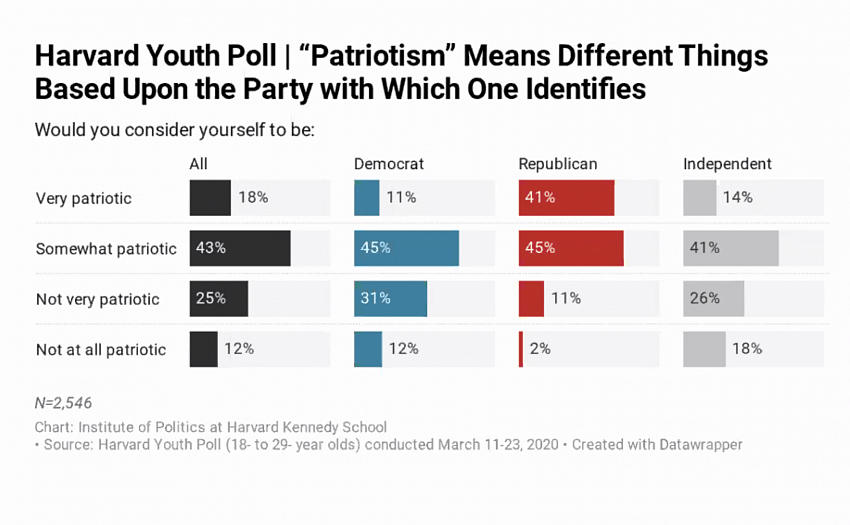Young People Far Less Patriotic Than They Used To Be, Poll Finds

Young Americans are dramatically less patriotic than they were 18 years ago in the aftermath of the September 11th terrorist attack, a newly released poll found.
Some 63 percent of people ages 18 to 29 surveyed in the poll identified as "very patriotic" or "somewhat patriotic" – but that number was 89 percent in 2002 when the Institute of Politics at Harvard University's Kennedy School of Government conducted its first Youth Poll. (Back then, the age group polled was 18 to 24.)
